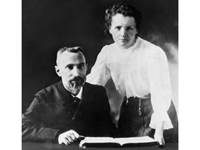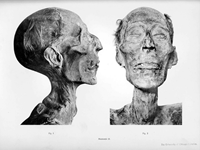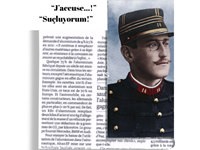Many tombs in ancient Egyptian necropolises depict dancing figures and people playing musical instruments. As Egyptologists have studied these depictions in more detail, they have been able to discover how this art form has changed over time.
Dancing was an important part of the daily life of the ancient Egyptians, both to facilitate the journey of the dead to the afterlife and to glorify the joys of earthly life. The figures of dancers in tombs and temples, spanning two millennia, have shed light for scholars to understand Egyptian rituals related to dance and its transformation over time.
In the early period, dance was performed by priests and ritual performers during religious ceremonies, festivals and processions honoring the gods. Over time, these performances became more secularized and were used to entertain guests at banquets. Throughout its long history, Egyptian dance has been enriched and diversified with new styles and movements.
Dance as Part of Ritual
The use of dance for ritual purposes became more prominent with the unification of Upper and Lower Egypt around 3100 BC. This union laid the foundation for the period known as the Old Kingdom (2575-2150 BC), which saw the construction of the Pyramids of Giza and great advances in art and architecture. Dance depictions from this period often show female dancers and musicians performing at funerals or burial sites.
Professional groups of dancers and musicians called “khener” emerged during this period. These groups, attached to temples or burial grounds, were led by a leader and took part in specific events, such as funeral rituals.
Although early Egyptian art usually features female dancers, there are some exceptions. A depiction from the 2nd Dynasty before the Old Kingdom, dating to the 3rd millennium BC, comes from the tomb of Nynetjer in Giza. It depicts male dancers carrying sticks used in bird hunting, female musicians and a dwarf woman watching them. Dwarves were associated with Bes, the god of music and childbirth, and were often involved in dance rituals. Bes is often depicted as a dancing dwarf.
Tomb art often depicts dancers with Egyptian instruments. One of these instruments is the sistrum. Consisting of a rod with metal disks, the sistrum was played like a rattle and used in dances dedicated to Hathor, the goddess of joy, love, beauty and music.
In funeral rituals, Hathor was believed to prepare the deceased for rebirth in the afterlife. Female dancers would honor the deity by shaking the sistrum to imitate the sound of Hathor passing through reed beds, and would try to please the gods with the sound of rattles.
Hathor's connection with dance continued throughout Egyptian history. An inscription in the Temple of Hathor at Dendera, built during the Ptolemaic period (332-30 BC), reveals the depth of this connection:
“We beat drums for her spirit, we dance for her grace. We raise her image to the heavens. She is the mistress of the sistrum and the lord of the tinkling necklaces.”
A Joyful Return
The Old Kingdom was followed by the First Intermediate Period, a period of weakened central authority and political turmoil. However, the Middle Kingdom (1975-1640 BC), which followed this turbulent period, witnessed significant advances in art and culture with the re-establishment of centralized government.
During this period, the structure of ritual dances, which had been performed only by priests and limited to the sanctuaries of temples, changed. Dances became part of religious ceremonies open to the public. For example, dances began to be performed in processions in which the statue of the god was taken out of the temple and visited other temples. Such events transformed dance from a more serious ritual into a joyful and lively celebration.
The Story of Sinuhe, one of the oldest surviving Egyptian literary works from the Middle Kingdom, provides clues to this transformation of dance. It tells the story of an Egyptian who fled the country, lived in a foreign land, and then wanted to return to Egypt. When the king accepts Sinuhe and allows him to be buried in Egypt, Sinuhe dances with great enthusiasm: “I went around my camp, shouting and singing.” Likewise, Sinuhe's hometown had taken on a festive atmosphere, with “young people dancing and celebrating”.
Dance depictions from the Middle Kingdom began to include increasingly complex and acrobatic figures. Dancers were depicted lying on their stomachs and touching their feet with their hands, while male dancers began to appear more frequently in scenes. Male dancers were depicted spinning on one leg or performing impressive movements.
During the New Kingdom period (1539-1075 BC), when ancient Egypt was at the height of its regional power, dancers' clothing and accessories also changed. Instead of traditional skirts or dresses, dancers began to wear shawls or ribbons wrapped around their hips. They let their hair down and adorned themselves with elegant jewelry such as bracelets, and their eyes were highlighted with loose kohl.
Music also underwent a significant evolution during this period. Stringed instruments accompanying the dancers were added to the repertoire and this is thought to have influenced the dance movements. In addition, dancers from Nubia brought their own styles and figures to Egyptian dance, expanding the repertoire.
Although dance continued to develop during this period, it retained its place in religious ceremonies. Tomb paintings from the New Kingdom period depict male funeral dancers called muu. These dancers wore headdresses made of vegetable fibers and resembling the Upper Egyptian pharaonic crown. These dancers, representing the gods of the necropolis, were in charge of guiding the deceased on his journey to the afterlife.
While religion was considered a fundamental element of daily life in ancient Egypt, the influence of the spiritual world was evident in art and symbolic expressions such as dance. For example, in the mirror dance, dancers dancing in pairs were depicted holding a wooden castanets in one hand and a mirror in the other. More than just objects, mirrors, with their round forms, symbolized the sun and the rebirth of the sun god Ra. This symbolism was closely linked to the Egyptian hope for resurrection in the afterlife.
Another ritual, called the Dance of the Stars, represented the movement of the sun from east to west and the cycle of life and death. In depictions of this dance, the strongest dancer is in the center, leading two lighter dance partners by the wrist.
Researchers have linked the movements of ancient Egyptian dances to modern Mediterranean dances, especially flamenco, and ballet figures, especially arabesque positions and turns on one leg. Together with these interpretations, the depictions in the tomb art show that the dances of the Egyptians, which symbolize the transition to the afterlife, actually gained a kind of immortality in themselves.
Source: arkeofili.com


 Nielawore
Nielawore










Yorum yazmak için lütfen giriş yapınız